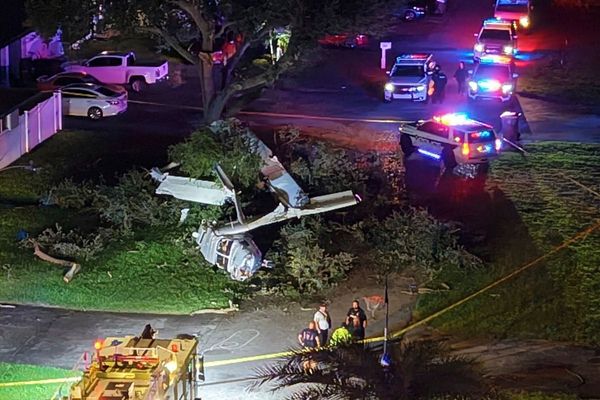
Britain’s air defence systems are “very limited, to the point of being negligible”, a key defence contractor has claimed, as the Ministry of Defence warned of the gravest risk of attack from the skies in 30 years.
Northrop Grumman UK, a leading provider of defence technology to the RAF and Royal Navy, offered its assessment in response to questioning by a parliamentary committee examining lessons to be learned from the war in Ukraine.
Asked whether there was a need for increased investment in integrated air and missile defence (IAMD), the company said Britain’s lack of capacity was a major risk to national security.
“Current capabilities are very limited, to the point of being negligible, which is the result of long-term under-investment and an over-reliance on Nato partners’ capabilities,” the company said. “This capability gap poses a significant risk to national security and the war demonstrates why IAMD is now a critical requirement.”
The intervention ranks among the starkest of public assessments of Britain’s state of readiness by an organisation with intimate knowledge of the country’s defence. Northrop Grumman UK supports the RAF’s F-35 Lightning II and the Royal Navy’s aircraft carriers and submarine fleet, which are key pillars of Britain’s air defence.
The company negatively contrasted the UK’s capacity to deal with an air salvo to that of Poland, whose government recently signed a $2.5bn deal with the US government to acquire a system that will synchronise its air defence weapons, including Patriot missile launchers.
“Put simply, the UK must strengthen investment in IAMD,” the company said. “This will require an investment in the architecture that delivers true integration, as Poland has done, alongside an investment in sensors and effectors. The investment required to protect military capability, government and critical national infrastructure will require significant resources. However, Russia has shown itself willing to target all three in this war and the UK is within effective weapons range of Russian systems.”
The comments echo a recent report from the Royal United Services Institute (Rusi), which found that the UK’s ground-to-air systems were “not currently equipped to be able to defeat many kinds of air threat” and that Russian submarines were within range to strike the UK without warning.
The number of personnel with expertise in air defences was said to be “very small”, and the government had not invested in the latest, most sophisticated systems that use a range of radars that are difficult to destroy or deceive.
The MoD relies on RAF Lightning and Typhoon jets to take out rogue aircraft and the Royal Navy’s six Type-45 destroyers to shoot missiles out of the sky, but many of these have been out of action for prolonged periods for maintenance or repair.
Six Sky Sabre ground-based air defence systems are each able to shoot down multiple missiles but at least two are understood to be currently deployed overseas.
The MoD said in its own evidence to the House of Lords committee that it was exploring how to improve its air defences.
Officials said: “The challenge of protecting ourselves against attack from the skies, both overseas and at home, is at its most acute for over 30 years – as evidenced in the war in Ukraine and recent events in Israel.”
Last month Adm Sir Tony Radakin, the chief of the defence staff, told LBC that discussions were taking place about building an Iron Dome similar to that used by Israel. The technology is designed to use radar to detect rockets and calculate their threat level. Interceptor missiles are only fired at those expected to strike populated areas.
A MoD spokesperson said: “The UK is well prepared for any event and defence of the UK would be taken alongside our Nato allies. As part of our commitment to increase UK defence spending to 2.5% over the next six years, we continue to review potential opportunities to develop our capabilities and modernise air defence across Europe in close discussion with allies and partners.”







